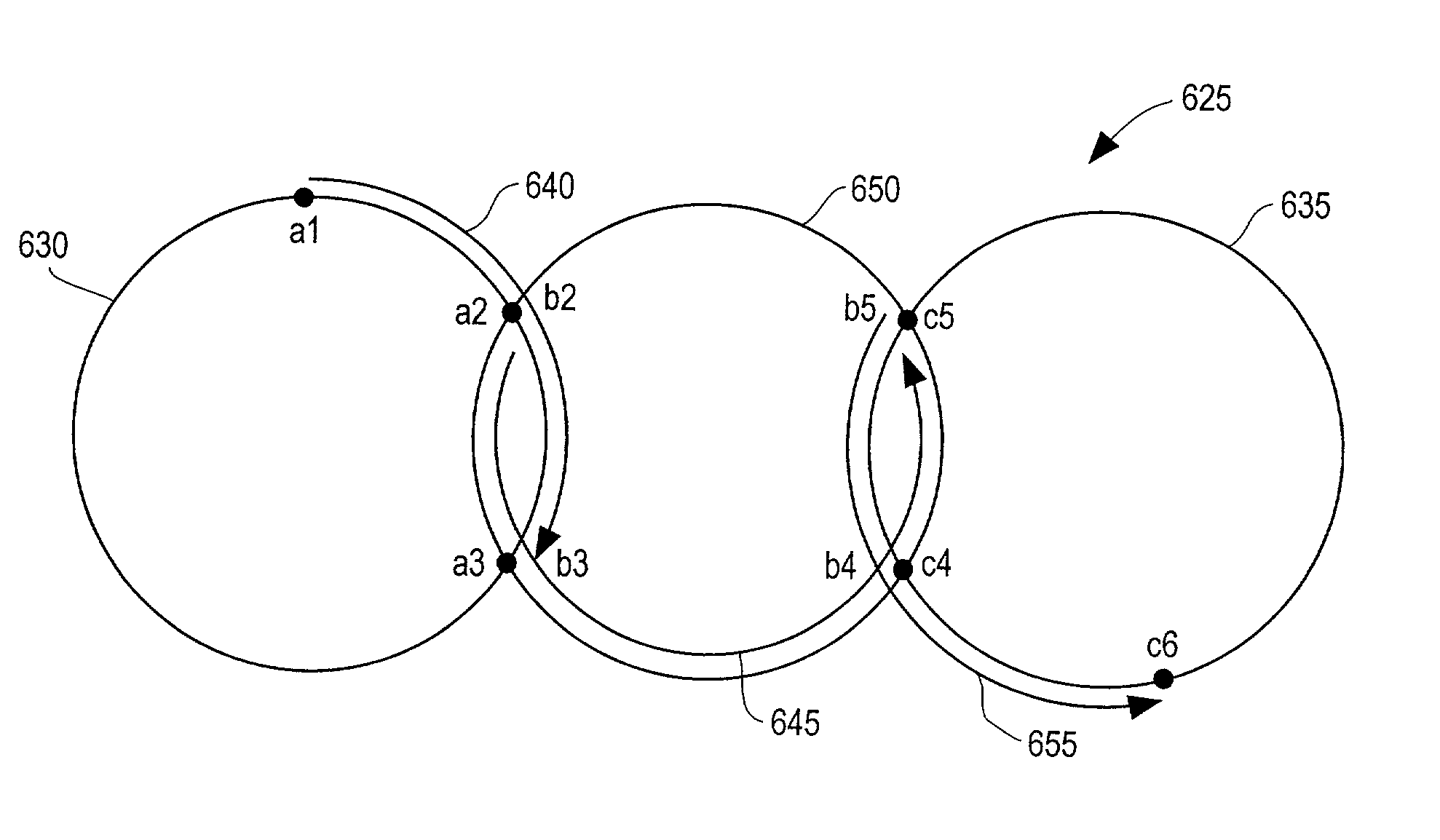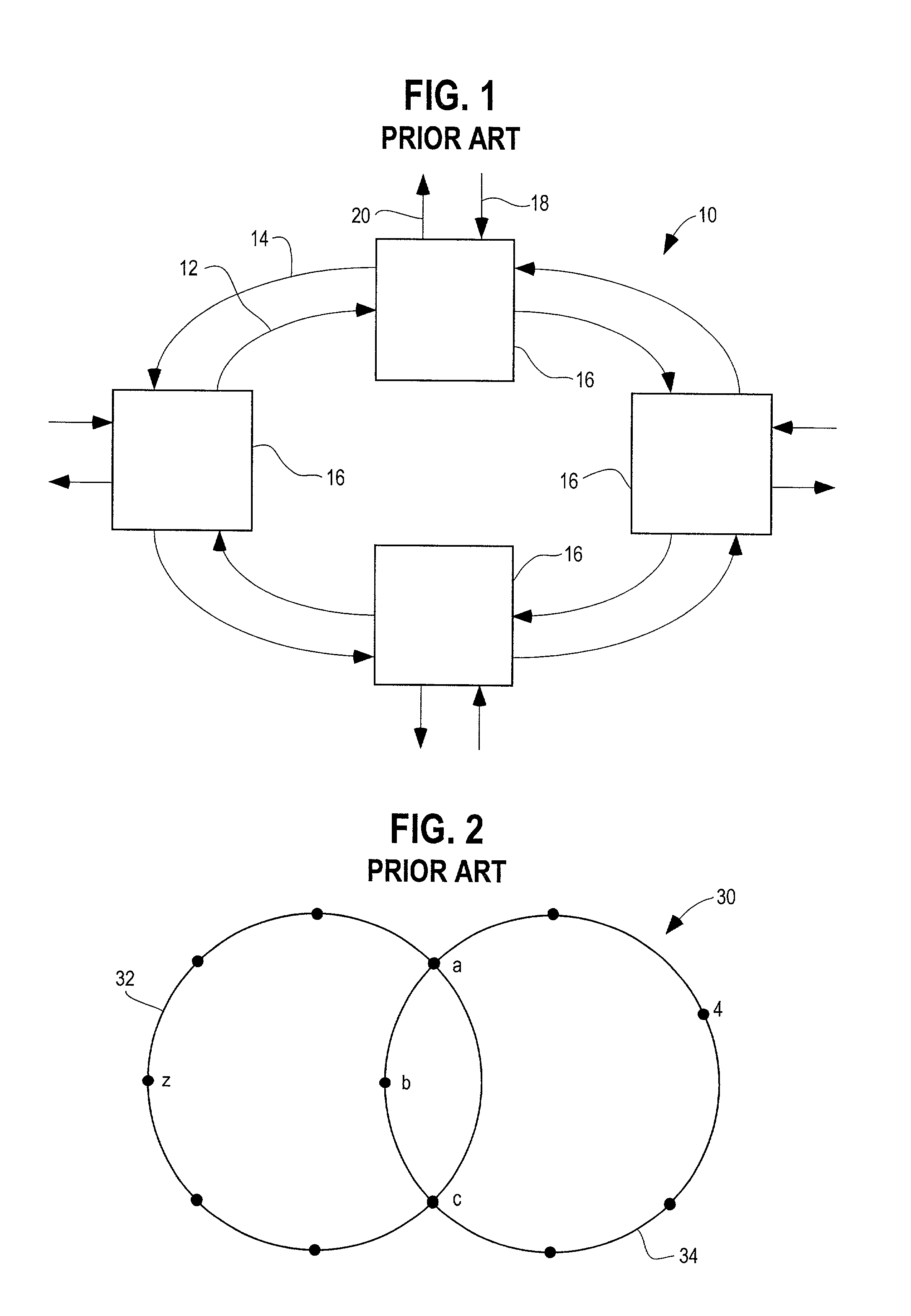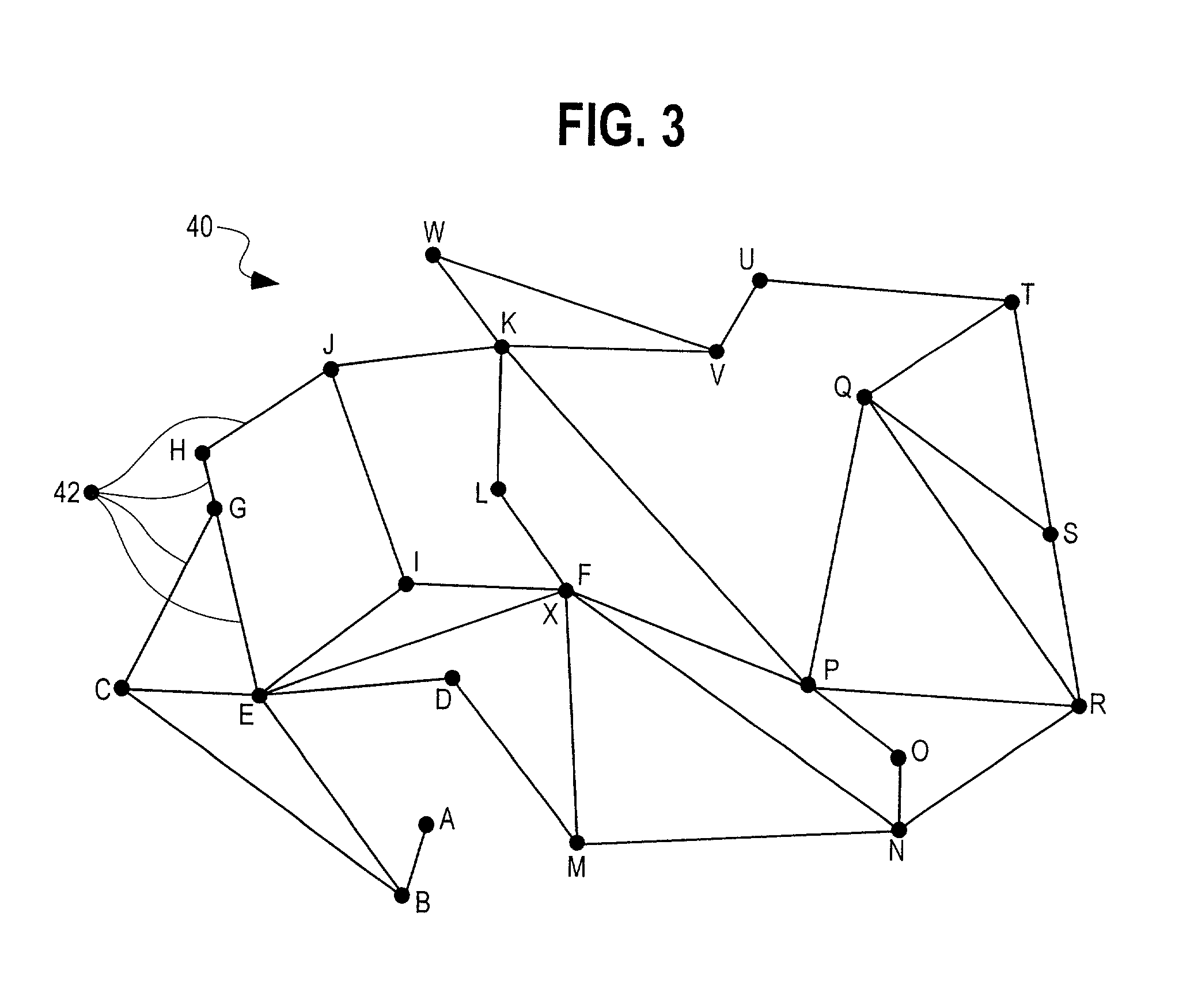Method and system for designing ring-based telecommunications networks
a technology of telecommunications networks and ring-based communications, applied in data switching networks, time-division multiplexing selection, multiplex communication, etc., can solve the problems of limited equipment and features, limited the choice and options of network users and designers, and limited the equipment of network designers, so as to facilitate the formation and selection of one or more rings, the effect of processing traffic data files
- Summary
- Abstract
- Description
- Claims
- Application Information
AI Technical Summary
Benefits of technology
Problems solved by technology
Method used
Image
Examples
Embodiment Construction
[0040]While this invention is susceptible of embodiment in many different forms, there are shown in the drawing and will be described herein in detail specific embodiments thereof with the understanding that the present disclosure is to be considered as an exemplification of the principles of the invention and is not intended to limit the invention to the specific embodiments illustrated.
[0041]Generally Sonet-based ring networks include multiple locations coupled together in sequence in a ring configuration, where the first location of the sequence is directly connected to the last location in the sequence. Typically associated with each location, are add-drop multiplexers which can facilitate the insertion or removal of signal traffic from the ring. The traffic can be either uni-directional or bi-directional.
[0042]As noted previously, one of the features of a ring topology is its survivability. If one of the connections is cut, the add-drop multiplexers are programmed to reroute th...
PUM
 Login to View More
Login to View More Abstract
Description
Claims
Application Information
 Login to View More
Login to View More - R&D
- Intellectual Property
- Life Sciences
- Materials
- Tech Scout
- Unparalleled Data Quality
- Higher Quality Content
- 60% Fewer Hallucinations
Browse by: Latest US Patents, China's latest patents, Technical Efficacy Thesaurus, Application Domain, Technology Topic, Popular Technical Reports.
© 2025 PatSnap. All rights reserved.Legal|Privacy policy|Modern Slavery Act Transparency Statement|Sitemap|About US| Contact US: help@patsnap.com



